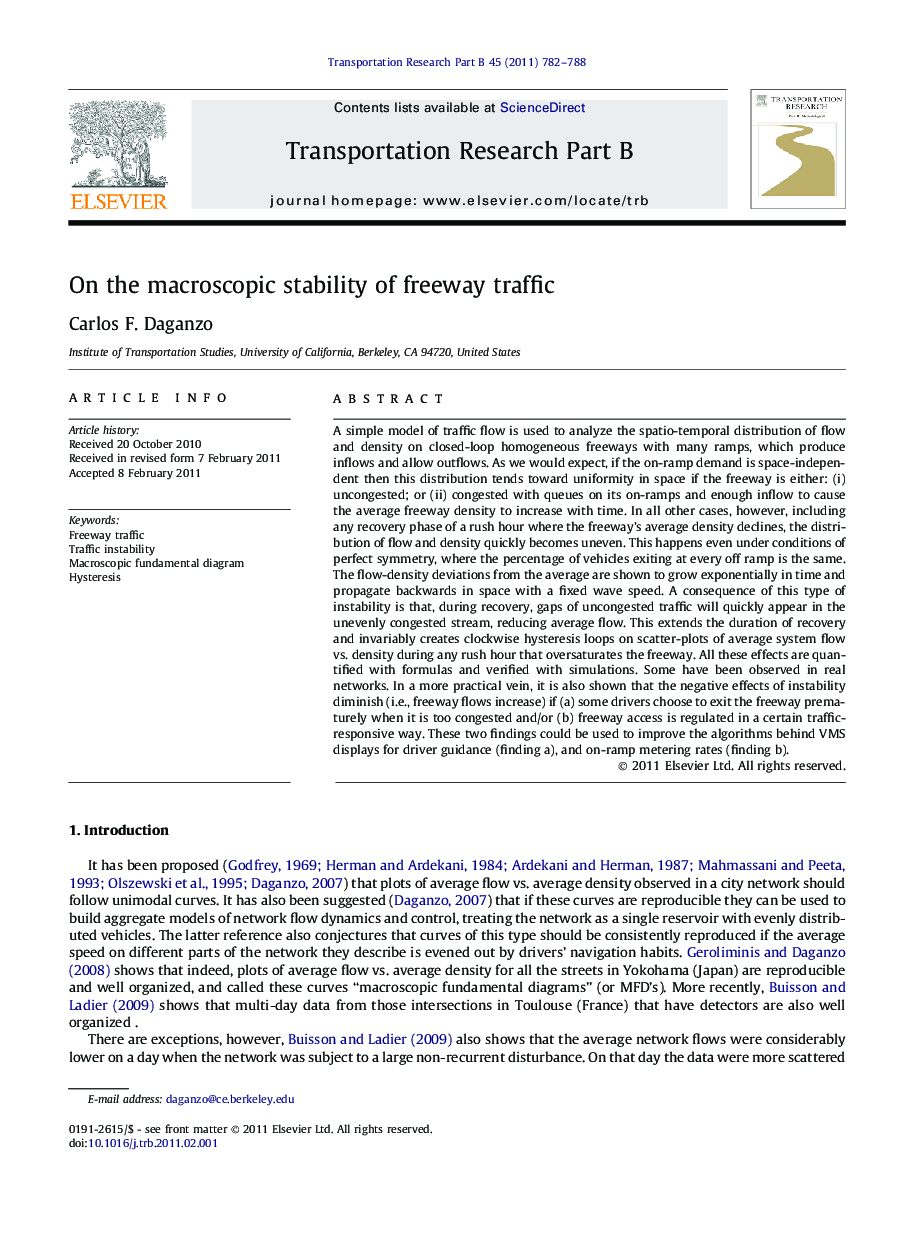| کد مقاله | کد نشریه | سال انتشار | مقاله انگلیسی | نسخه تمام متن |
|---|---|---|---|---|
| 1132268 | 955768 | 2011 | 7 صفحه PDF | دانلود رایگان |

A simple model of traffic flow is used to analyze the spatio-temporal distribution of flow and density on closed-loop homogeneous freeways with many ramps, which produce inflows and allow outflows. As we would expect, if the on-ramp demand is space-independent then this distribution tends toward uniformity in space if the freeway is either: (i) uncongested; or (ii) congested with queues on its on-ramps and enough inflow to cause the average freeway density to increase with time. In all other cases, however, including any recovery phase of a rush hour where the freeway’s average density declines, the distribution of flow and density quickly becomes uneven. This happens even under conditions of perfect symmetry, where the percentage of vehicles exiting at every off ramp is the same. The flow-density deviations from the average are shown to grow exponentially in time and propagate backwards in space with a fixed wave speed. A consequence of this type of instability is that, during recovery, gaps of uncongested traffic will quickly appear in the unevenly congested stream, reducing average flow. This extends the duration of recovery and invariably creates clockwise hysteresis loops on scatter-plots of average system flow vs. density during any rush hour that oversaturates the freeway. All these effects are quantified with formulas and verified with simulations. Some have been observed in real networks. In a more practical vein, it is also shown that the negative effects of instability diminish (i.e., freeway flows increase) if (a) some drivers choose to exit the freeway prematurely when it is too congested and/or (b) freeway access is regulated in a certain traffic-responsive way. These two findings could be used to improve the algorithms behind VMS displays for driver guidance (finding a), and on-ramp metering rates (finding b).
Research highlights
► Freeway MFD data is predicted to exhibit clockwise hysteresis loops during peak periods even if demand is spatially homogeneous.
► The low flow branch of a loop should arise when congestion is dissipating.
► Adaptive ramp metering can increase the dissipation flow.
Journal: Transportation Research Part B: Methodological - Volume 45, Issue 5, June 2011, Pages 782–788